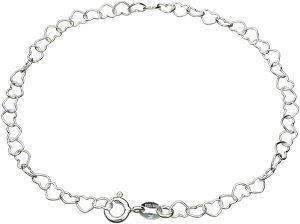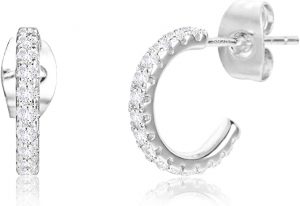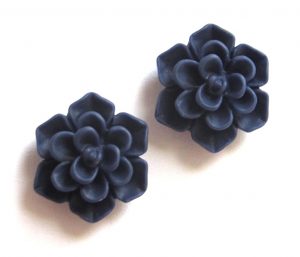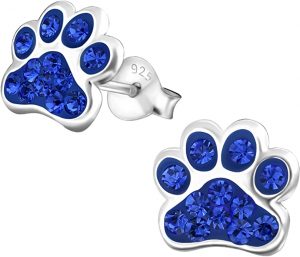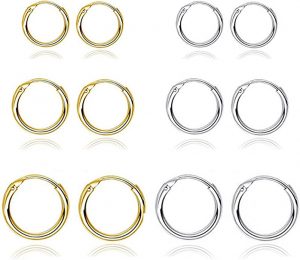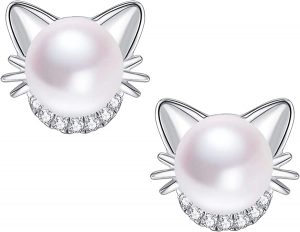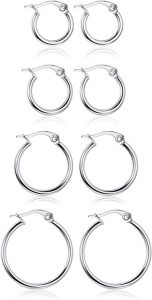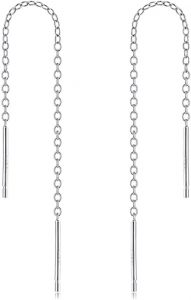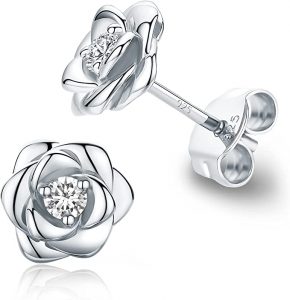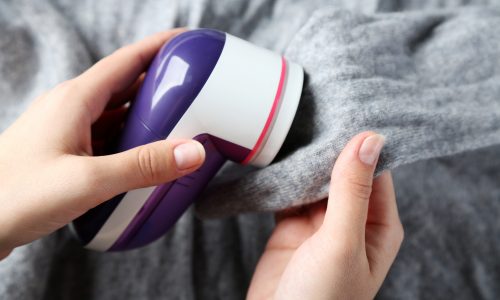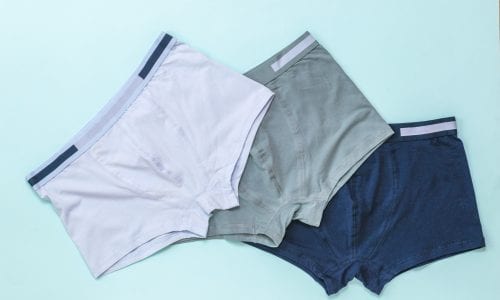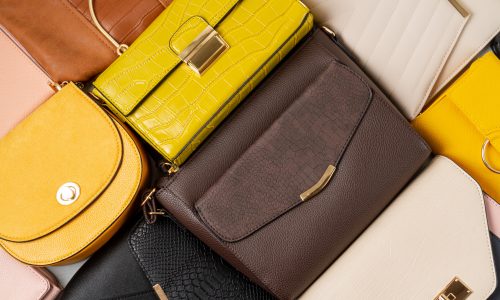The Best Nickel-Free Jewelry
We looked at the top 9 Nickel-Free Jewelrys and dug through the reviews from 6 of the most popular review sites including and more. The result is a ranking of the best Nickel-Free Jewelrys.
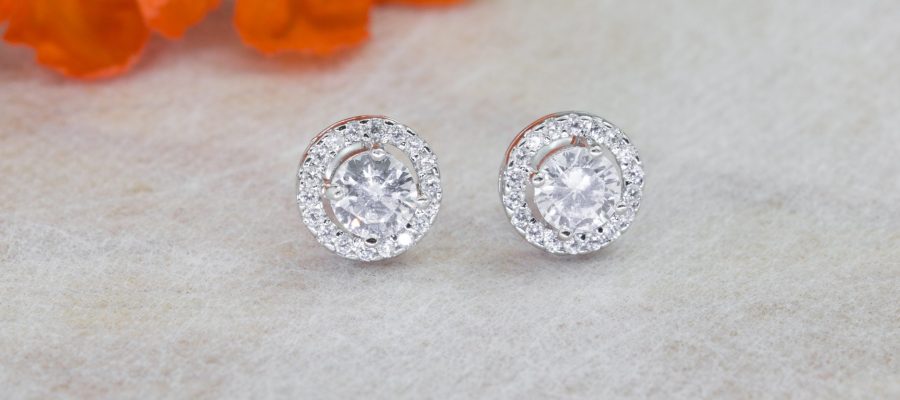
Our Review Process
Don't Waste Your Money is focused on helping you make the best purchasing decision. Our team of experts spends hundreds of hours analyzing, testing, and researching products so you don't have to. Learn more.
Our Picks For The Top Nickel-Free Jewelrys
- 1. Joyful Creations Sterling Silver Adjustable Nickel-Free Heart Bracelet
- 2. LANCHARMED Hypoallergenic Nickel-Free Cubic Zirconia Open Hoop Earrings
- 3. BoaNNcraft Hypoallergenic Cadmium & Nickel-Free Succulent Stud Earrings
- 4. Icyrose Sterling Silver Nickel-Free Paw Print Stud Earrings
- 5. BMMYE Nickel-Free Hypoallergenic Silver & Gold Hoop Earrings Set, 10 Pairs
- 6. JORA Nickel-Free Freshwater Pearl Sterling Silver Cat Earrings
- 7. LOYALLOOK Nickel-Free Small Hoop Earrings Set, 4 Pairs
- 8. YFN Sterling Silver Nickel-Free Hypoallergenic Threader Chain Earrings
- 9. Raneecoco Gold Plated Nickel-Free Hypoallergenic Rose Stud Earrings
Simplicity is the word with this adaptable bracelet. The chain is petite enough that you might forget it's on, but it will still make an impression on others. Moreover, it's surprisingly strong for being this lightweight.
Delicate But DurableWear this trinket with just about anything.
The cubic zirconias provide ample glitter, but the delicate size makes it suitable for the office. The backings are strong, so you can leave them in all day without fear. The sterling silver is both attractive and hypoallergenic.
Cute and SecureThese earrings are a great size for everyday wear.
Complete your Friday night ensemble with these subtle studs. They're free of nickel or any irritating metals, and the design lets them be versatile yet stand out at the same time. The simple rubber backings are a breeze to take on or off.
Adorable Little StudsThese studs are the go-to earrings for any outfit.
The blue crystals here have the shine of much more expensive gemstones. They're great for animal lovers of any kind or just those who need a quirky accent on their outfit. The sterling silver is built to last and won't tarnish easily.
For Dog LoversSensitive ears can wear these without fear.
Buying Guide
Those of us with nickel allergies know the scenario all too well: We find the perfect necklace or set of earrings, and start wearing them every other day. As the days go by, we notice that the trinket hasn’t lost its luster — but our skin certainly has. We get discolorations or even a painful rash, and it doesn’t take long to realize the jewelry is the culprit.
Not everyone has an allergy to nickel, but the condition is common enough that most reputable jewelers avoid using nickel or other heavy metals (or at least make the percentage of nickel known). But with the sheer amount of dealers online, it’s still good for people to know how to choose the safe option.
The first thing to know is that a piece of jewelry doesn’t need to be 100% nickel to cause an allergic reaction. Nickel is the most common culprit in a group of heavy metal allergens that include copper and lead. A certain metal might be only 2% nickel, but that nickel can slowly leach off the jewelry when we sweat and get absorbed into our pores. It also easily gets into wounds, which is why nickel-laced earrings can cause an especially severe reaction.
So what metals are safe to buy? It can be tricky to tell, particularly with gold. As a softer metal, gold is usually combined with harder metals to make a more resilient alloy. As a general rule, the higher the concentration of gold, the better. You’re completely safe with 24 karat pure gold, but anything 18k or higher should have a negligible amount of other metals in it.
Of course, all that glitters is not gold. If you want to go with silver, you should know that silver jewelry is also typically sold as an alloy. Certified sterling silver is your best bet for a nickel-free substance, but keep in mind that it usually contains about 7% copper. While copper is a heavy metal, it doesn’t cause an allergic reaction nearly as much as nickel.
Now for the more affordable options: If you care less about the gleam of the metal than the diamonds in the setting, you might go with stainless steel. This is a common material for earrings, and while surgical stainless steel might contain traces of nickel, it’s still considered safe for all but the most sensitive skin types.
Titanium is a popular choice for men’s jewelry, and many modern gold alloys frequently substitute titanium for nickel. It’s fully hypoallergenic, mostly because it has a higher resistance to leaching due to sweat or pool chemicals (which also helps it retain its shine).
Platinum or palladium are other great choices when it comes to hypoallergenic metals. In a quality piece of jewelry, there won’t be any nickel in either of the two materials. Platinum is durable but a little harder to work with, so it tends to be the more expensive option.
Why we recommend these nickel-free jewelrys?
Products Considered
Products Analyzed
Expert Reviews Included
User Opinions Analyzed
Our experts reviewed the top 9 Nickel-Free Jewelrys and also dug through the reviews from 6 of the most popular review sites including and more. The result is a ranking of the best of the best Nickel-Free Jewelrys.
DWYM is your trusted roduct review source. Our team reviews thousands of product reviews from the trusted top experts and combines them into one easy-to-understand score. Learn more.
What to Look For
So what do you do if you’ve already bought a piece of jewelry and find that it has nickel? Some people don’t find out they have an allergy until their wedding band starts making them itch — and that’s not an easy trinket to trade in.
If you want to keep your ring, necklace or earring, there are options. You can always have the jewelry coated with a layer of rhodium plating that will keep the nickel off your skin. It’s always best to trust a certified jeweler to do this, preferably the one that sold the item in the first place. Keep in mind the coating may need to be reapplied every few years. If you want to go the economy route, you can always coat your finger and/or the ring in clear nail polish. Do it every day and that forms a barrier that should keep your skin rash-free.
More to Explore
So how did nickel get into our jewelry in the first place? When the process of nickel plating was first discovered way back in the 19th century, it was a godsend — and not just for jewelers. It made material stronger, shinier, and more resistant to corrosion.

